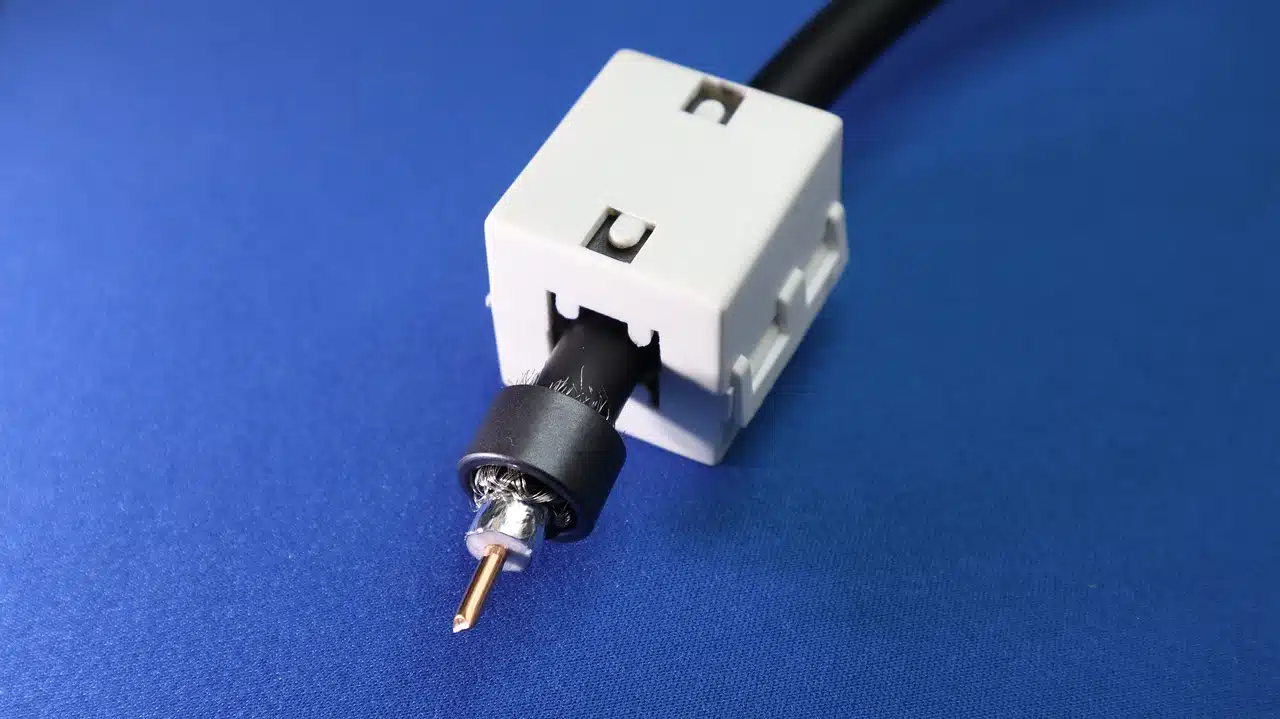
Coaxial cable allows the transmission of high-frequency electricity signals.
A coaxial cable is a type of cable used to transmit high-frequency electricity signals . These cables have a pair of concentric conductors: the live or central conductor (dedicated to transporting data) and the outer conductor , shield or mesh (which acts as a current return and ground reference). Between the two is the dielectric , an insulating layer.
It should be noted that the cord that allows electricity to be conducted and that is covered by an envelope made up of several layers is known as a cable . It is usually made with electrical conductors such as aluminum or copper .
Origins of coaxial cable
Coaxial cables were developed in the 1930s and enjoyed great popularity until recently. Currently, however, the digitalization of the different transmissions and the higher frequencies compared to those used previously have caused these cables to be replaced by fiber optic cables, which have a greater bandwidth .
The structure of the coaxial cable is made up of a core developed with copper wire that is wrapped by an insulating element, some pieces of braided metal (to absorb noise and protect information) and an external cover made of plastic, Teflon or rubber, who does not have the ability to drive.
Among the various types of coaxial cable (with different diameters and impedances), the most common are those made with polyvinyl chloride (better known as PVC ) or with plenum ( materials that resist fire).
Long distance telephone networks, Internet and cable television, the connection between the antenna and the television, and amateur radio devices can use coaxial cables.

Coaxial cable has various uses.
digital audio
The area where coaxial type cables are most commonly found is digital audio . In this case, the connector resembles an RCA (the type of connection used for analog audio and video, which consists of a white plug, a red plug, and a yellow plug), although the information it carries is completely different. Compared to a normal audio cable, it is significantly thicker, as it uses the same type of mesh that is seen in traditional television antenna cables.
The digital coaxial transmits an electrical signal, which runs through the copper wire that is inside, covered with aluminum foil to avoid interference. The first difference from analog audio cables is the price; Since the sound quality they offer is much superior , it is necessary to pay almost ten times more. This can tempt an inexperienced user to make a homemade alternative using a traditional RCA cable, making a serious mistake.
Among the disadvantages of such a decision are the absence of insulation, which causes signal losses in very long cables, and a considerable decrease in bandwidth . This would result in cut-off sound, since not all the digital information coming from the device would be received constantly. In addition, interference from other electrical devices would be perceived.
Considering that coaxial audio cables do not cost a lot of money and, assuming you have the necessary equipment, offer considerably higher audio quality, the decision not to purchase them is difficult to understand. It is important to understand that, since the type of information they transmit is digital , it can include both the two channels of stereo sound and the six channels of ambient sound (generally known as surround ). Furthermore, as with video via HDMI or DVI, you do not need to spend large sums of money to seek the best results, since (even in inexpensive products) the digital data is always the same.
